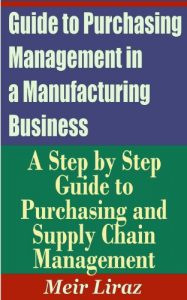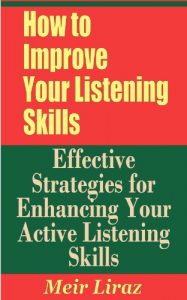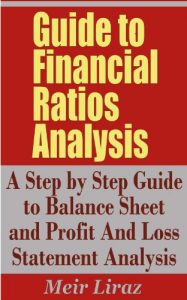Jim Black, the owner of a small foundry, complained bitterly one day about the amount of defective material he was receiving. "The raw material is guaranteed to meet quality specifications so as to contain less than.005% impurities. For the past three weeks, though, our castings have been turning out rougher than they should. I'm sure that last shipment of raw material wasn't as pure as it should have been. What do I do now?"
In another plant, Joe White was wondering what to do about a new supplier of electronic components he had just purchased from. "I got a good price on the first shipment, and so signed an order for two more shipments. The bill I got for this last shipment is almost $600 over that of the first. I told the supplier to take it back or reduce the bill, and he said that his quotation gave him the right to increase prices as inflation and labor expenses rose for him. I know I could get the shipment for less, elsewhere."
Both these situations highlight the need to follow good purchasing procedures to reduce the incidence of such problems.
In this guide you will review the activities which lead to effective purchasing.
Specifically, you will explore the procurement cycle which concerns decisions on:
how to determine the firm's purchasing needs
finding a supplier who will best satisfy purchasing needs
negotiating and making the purchase
communicating the purchase decision to the supplier and to relevant personnel within your firm, and
a follow-up procedure for evaluating your purchasing decisions.
My name is Meir Liraz and I'm the author of this book. According to Dun & Bradstreet, 90% of all business failures analyzed can be traced to poor management. This is backed up by my own experience. In my 31 years as a business coach and consultant to businesses, I've seen practically dozens of business owners fail and go under -- not because they weren't talented or smart enough -- but because they were trying to re-invent the wheel rather than rely on proven, tested methods that work. And that is where this book can help, it will teach you how to avoid the common traps and mistakes and do everything right the first time.
Table of Contents:
1. Introduction
2. Purchasing Objectives
3. The Procurement Cycle
4. Determining Purchasing Needs
5. Make-Versus-Buy
6. Selecting Suppliers
7. Sources of Information About Suppliers
8. Making The Purchase
9. Preparing The Purchase Order
10. Receiving And Inspection
In another plant, Joe White was wondering what to do about a new supplier of electronic components he had just purchased from. "I got a good price on the first shipment, and so signed an order for two more shipments. The bill I got for this last shipment is almost $600 over that of the first. I told the supplier to take it back or reduce the bill, and he said that his quotation gave him the right to increase prices as inflation and labor expenses rose for him. I know I could get the shipment for less, elsewhere."
Both these situations highlight the need to follow good purchasing procedures to reduce the incidence of such problems.
In this guide you will review the activities which lead to effective purchasing.
Specifically, you will explore the procurement cycle which concerns decisions on:
how to determine the firm's purchasing needs
finding a supplier who will best satisfy purchasing needs
negotiating and making the purchase
communicating the purchase decision to the supplier and to relevant personnel within your firm, and
a follow-up procedure for evaluating your purchasing decisions.
My name is Meir Liraz and I'm the author of this book. According to Dun & Bradstreet, 90% of all business failures analyzed can be traced to poor management. This is backed up by my own experience. In my 31 years as a business coach and consultant to businesses, I've seen practically dozens of business owners fail and go under -- not because they weren't talented or smart enough -- but because they were trying to re-invent the wheel rather than rely on proven, tested methods that work. And that is where this book can help, it will teach you how to avoid the common traps and mistakes and do everything right the first time.
Table of Contents:
1. Introduction
2. Purchasing Objectives
3. The Procurement Cycle
4. Determining Purchasing Needs
5. Make-Versus-Buy
6. Selecting Suppliers
7. Sources of Information About Suppliers
8. Making The Purchase
9. Preparing The Purchase Order
10. Receiving And Inspection









